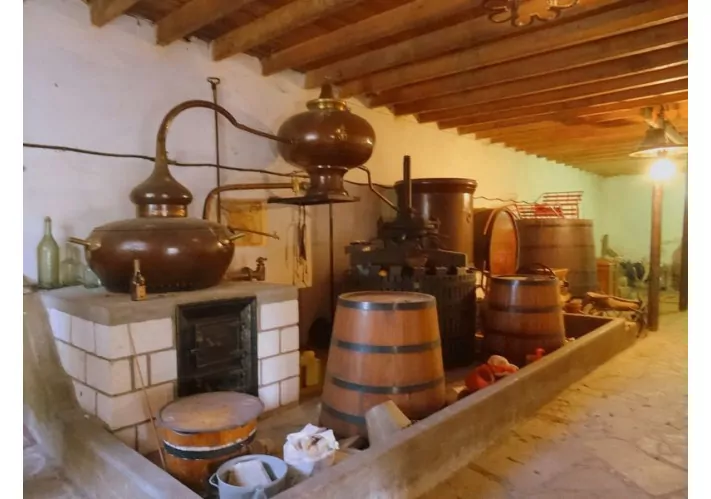- Leeftijd (minimaal)
- early 20th century
Omschrijving
De werken bevinden zich op een eigendom in Cognac, Frankrijk.
Het systeem werd in maart 2019 geïnspecteerd en beoordeeld door een meesterstoker en inwoner van Cognac. Hij spendeerde meer dan twee uur aan het onderzoeken van de werken en merkte het volgende op:
1) De fabrikant is Mareste.
2) Het identificatiemerk is bevestigd op de aftapklep onderaan het condensreservoir.
3) De constructie is van koper en messing.
4) De fabriek is waarschijnlijk gebouwd in het begin van de 20e eeuw, misschien in de jaren 1920.
5) Het interieur van de drie schepen is schoon en gezond.
6) De bodem van het fornuis is nog dik en niet aangetast door hitte.
7) Er zitten vijf en een halve draai in de koperen spoel in het condensreservoir en de slang lijkt ongeveer 6 cm in diameter te zijn.
8) Het fornuis staat bovenop de vuurkamer in plaats van erin, en de vuurkamer is nooit gebruikt.
9) Dit feit doet ons vermoeden dat een vorige eigenaar de werken in hun huidige positie heeft neergezet, waarschijnlijk om ze te bewaren, tentoon te stellen en te conserveren.
10) Hoewel de werken bewijzen laten zien dat ze ooit in gebruik zijn geweest, laten drie kleine gaatjes in de bodem van elk vat zien dat ze uit gebruik zijn genomen en op deze manier gemarkeerd zijn door de belastingdienst.
11) De distilleerder merkte op dat er niets mis was met de fabriek dat niet vrij gemakkelijk kon worden gerepareerd, en dat het tegen extra kosten kon worden verbeterd. Hij merkte bijvoorbeeld op dat de bestaande spoel kon worden vervangen door een spoel met meer spiralen/draaiingen.
12) Met betrekking tot de kleine geponste gaten in de bodems van de drie vaten ... zei de distilleerder dat de gaten gemakkelijk konden worden gerepareerd en dat het volgens hem mogelijk zou kunnen zijn om opnieuw een licentie te verlenen voor gebruik in Frankrijk. Hij specificeerde niet of dat gebruik beperkt zou blijven tot persoonlijk gebruik in plaats van commercieel, en hij benadrukte dat verder onderzoek nodig zou zijn.
13) De distilleerder merkte ten slotte op dat de werken een prachtig voorbeeld waren van een Alambic geproduceerd door Mareste en dat het twee soorten waarde had ... als een werk dat weer in werkende staat kon worden gebracht met een investering in upgrading, en ook als een verzamelobject voor iemand die het privé of voor het publiek wil tentoonstellen.













